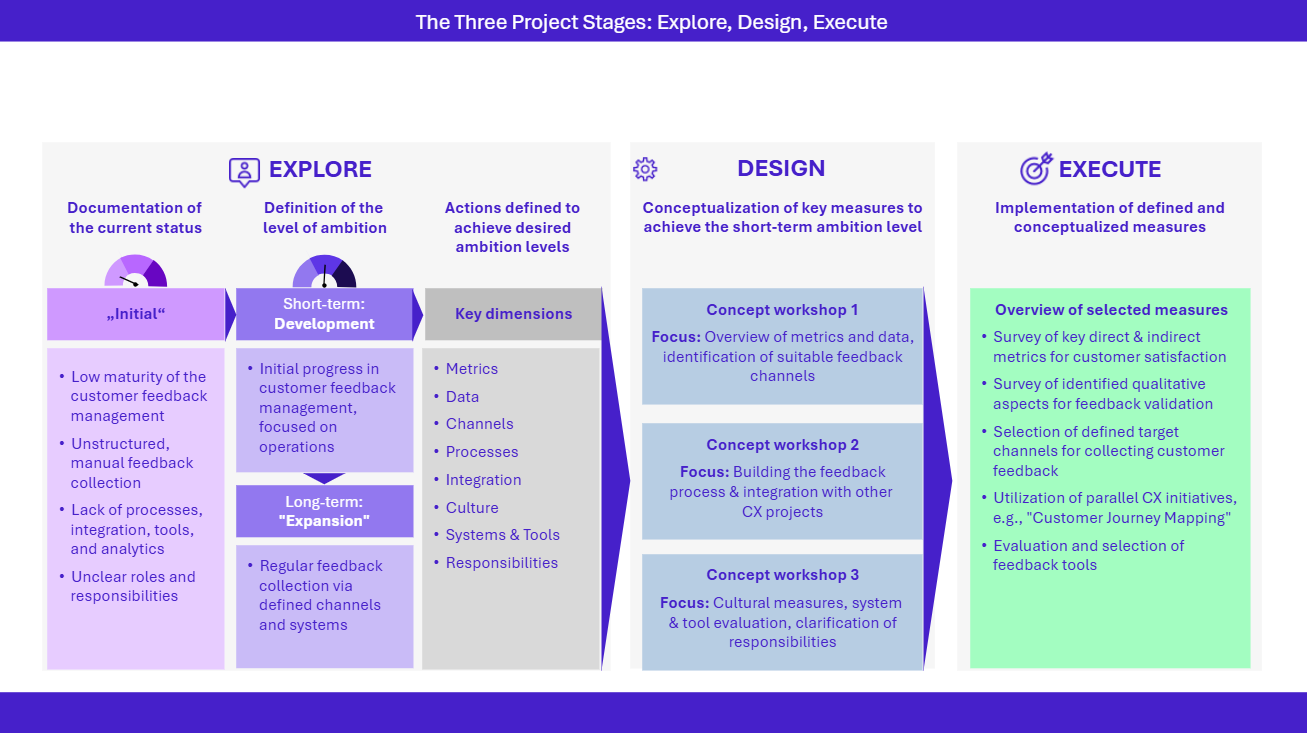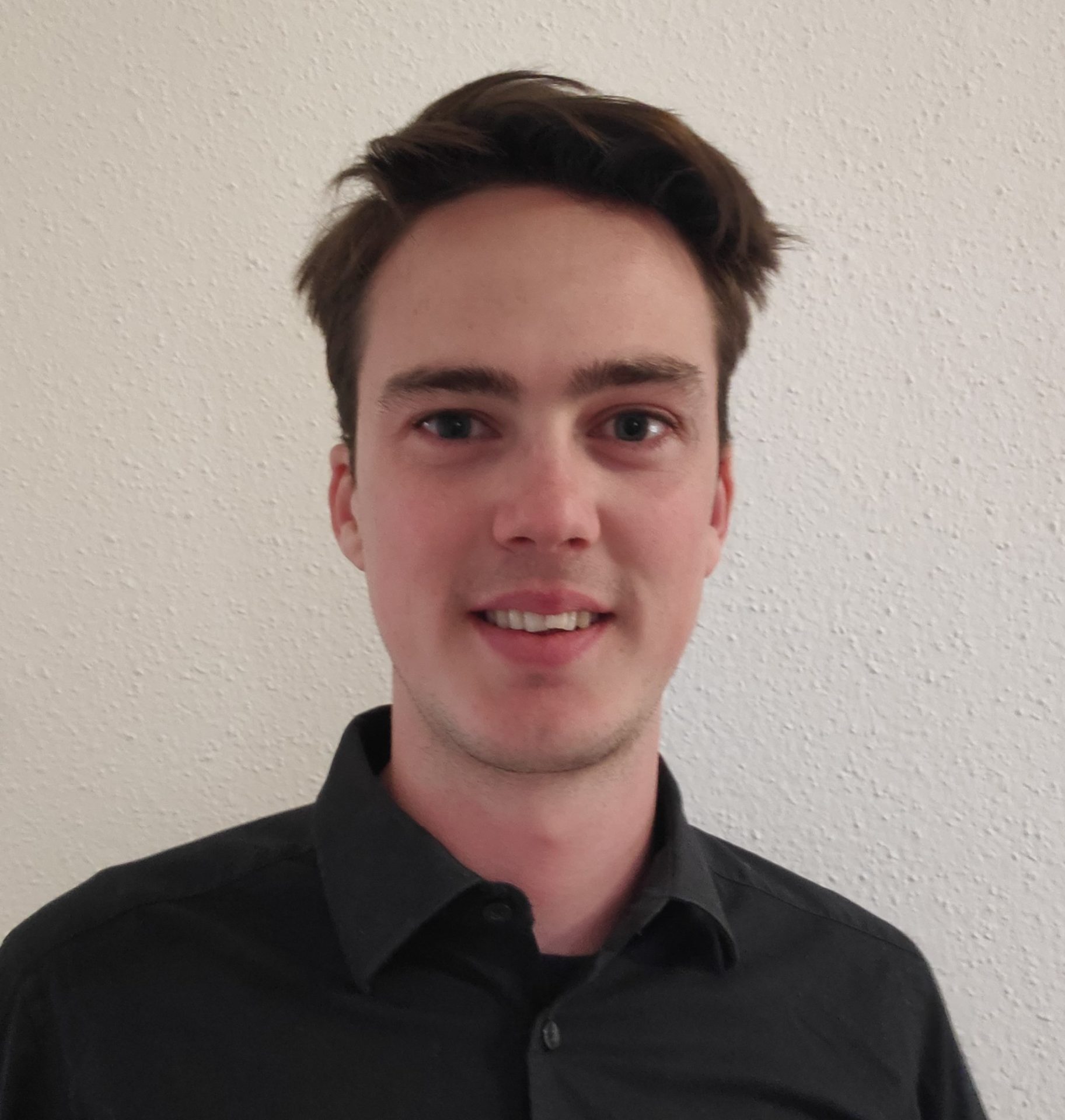Tangible results and sustainable perspectives
Voice of the Customer (VoC) concept
As part of the project, a clear vision was developed for the top priority of customer satisfaction. The goal was to create a holistic, pragmatic, and flexibly scalable “Voice of the Customer” (VoC) concept tailored to the specific needs of the energy provider. In close collaboration, key areas such as defining direct and indirect customer satisfaction metrics for each channel, as well as identifying data sources and requirements for each metric, were worked out. Additionally, various tool scenarios were evaluated, and a longlist of potential tool providers was compiled.
Guide for systematic feedback collection design
A central component was the development of a guide for the systematic design of feedback surveys, applied to the customer journeys from a parallel project. Initial feedback surveys were also designed. A customer experience cycle was developed, covering all relevant activities, tools, and systems, and clearly defining both central and decentralized CX roles.
Interactive internal communication strategy
To foster a customer-centric mindset within the company, an interactive internal communication strategy was developed to support the entire CX management process. All actions were precisely aligned, and responsibilities were clearly defined. The CJM project was successfully integrated into the VoC concept, resulting in a sustainable end-to-end CX management process.
Employee training
The project team was trained in key VoC methodologies, and essential assets, such as the guide for designing feedback surveys, were provided. The collaboration helped promote a customer-centric mindset and integrated the decentralized distribution of CX responsibilities while maintaining central coordination. This approach allowed for scaling internal customer centricity and alleviating the central roles – a long-term perspective for the company to achieve sustainable customer satisfaction.





